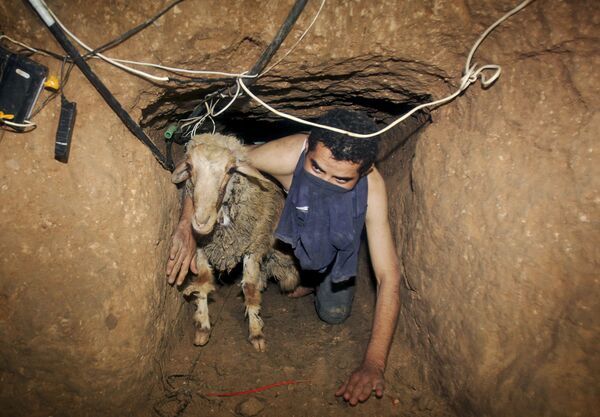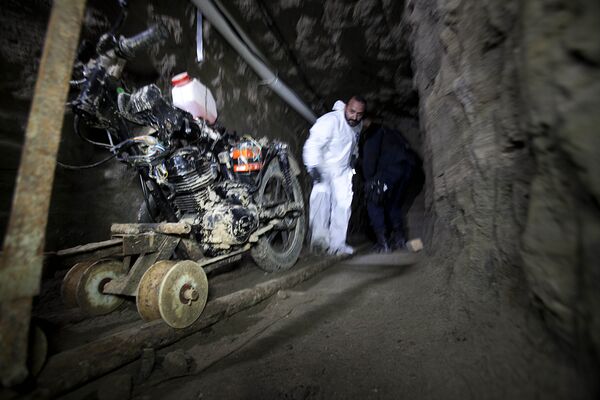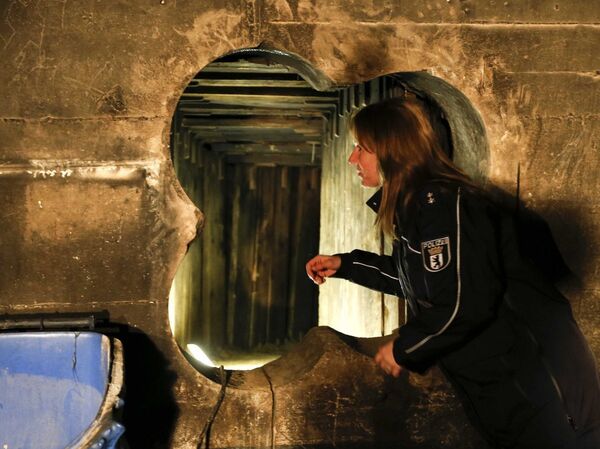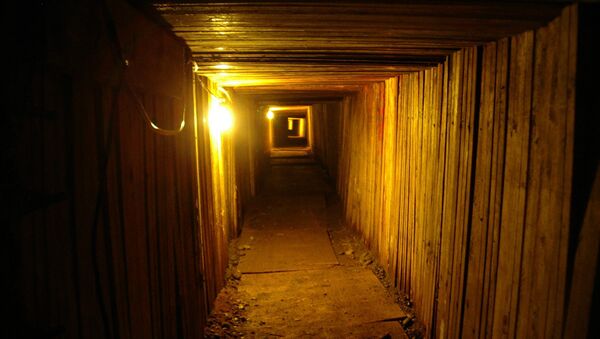In the case of the “unsuccessful” robbery in Sao Paulo the thieves had dug the tunnel starting from a building a few blocks away from the bank.
The robbers definitely knew what they were doing as the tunnel vaults were reinforced; there was electricity inside and there were even some ventilation fans. The whole construction process took them four months to complete.
There are hundreds of narrow underground passages that were dug up for contraband on the Palestinian border with Egypt. Tons of consumer goods, cattle, money and weapons were delivered to the Gaza Strip via these tunnels.

Although efforts were made to stop the smuggling by constructing a wall, it was all in vain.
More often than not, underground tunnels are used to smuggle drugs across borders. In 2005, the US Drug Enforcement Administration flooded a 106-meter-long tunnel with cement near the city of Linden, Washington.
The tunnel crossed into the border with Canada and led to the settlement of Aldergrove in British Columbia. It was used to smuggle drugs worth millions of dollars into the United States.
In many cases, underground tunnels had been used to break out high-profile prisoners, like in 2015 when the famous Mexican drug lord Joaquín "El Chapo" Guzman disappeared from his cell from a high-security prison.

The guards discovered an entrance to the tunnel in his cell, which his accomplices had dug up. The tunnel had lighting and ventilation and led to a construction site one and a half kilometers from the prison.
"El Chapo" escaped from prison on a special motorcycle, adapted for riding on the rail tracks. However, he was caught six months later.
In 2011, the Taliban militants dug out a 320-meter-long tunnel to the main prison in the Afghan city of Kandahar and freed more than 450 prisoners through it.
Similarly in 2015, some 20 dangerous criminals accused of murder, rape and kidnapping fled prison via a self-made underground tunnel from a Guatemalan prison nicknamed “little hell.”
However, tunnels are sometimes dug for simpler reasons: to get rich.
In 2013, a group of thieves broke into one of Berliner Volksbank's bureaus and emptied hundreds of safety deposit boxes. To get into the bank, the thieves dug up a 30-meter-long tunnel from a garage nearby.

In 2005, over 150 million real were stolen from a bank in the Brazilian city of Fortaleza. The thieves had dug a tunnel into the bank for three months right under a busy street. Their work paid off quite well.
Although the authorities try to prevent such incidents from happening, at times they are tough to control, especially if the tunnels are dug at some national borders.
Drug dealers on the US-Mexico border have dug up so many tunnels that a special unit was created in the United States border patrol: a detachment to study border tunnels.

The US border guards even nicknamed these agents “tunnel rats.”


